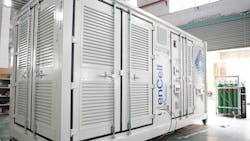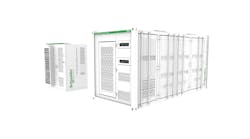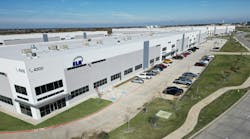The Sacramento Metropolitan Air Quality Management District has a vision: Create e-mobility hubs in underserved areas of Sacramento, along with resilient hubs powered by microgrids.
To date, the district has created one e-mobility hub, the Del Paso Heights Mobility Hub, said Jaime Lemus, director of transportation and climate change for the district.
E-bikes, EVs and electric shuttles for underserved community
The pilot project’s goal is to provide numerous electric transportation options in an underserved community, including shared zero emissions vehicles, an electric shuttle and e-bikes.
“The idea is to provide transportation services in areas that are transportation deserts,” Lemus said. “It could be a community car share or could be charging for clean cars if you live in an apartment. This is a great opportunity for charging,” said Lemus.
In addition, the chargers might attract electric vehicle (EV) drivers who are passing through the area who might stop to charge and then visit local businesses.
52 mobility hubs planned
The community’s transportation needs might include running errands, shopping, taking students to school or providing rides for the elderly. The project, which received $1.2 million in funding from the Sacramento Metropolitan Air Quality District, is a partnership between the district, Green Tech – a nonprofit organization that provides workforce skills – and the Sacramento Public Utility District (SMUD).
Fifty-two of the e-mobility hubs are funded and slated to be built in the Sacramento area.
The larger vision is to pair some of the hubs with microgrid-enabled resilient sanctuaries that serve the communities, said Lemus. This would likely involve creating resilience hubs in nonprofit community centers, possibly at Community Resource Project (CRP) sites where SMUD invests in electrification and weatherization work and provides workforce development for low-income customers.
Resilience hubs in trusted community centers
The hubs would be in community centers that residents know and trust, said Lemus. “The vision: to make the community centers areas where people can seek some kind of shelter during wildfires, outages or when it’s too hot. They have to be places people feel comfortable in. We need to invest in the communities to make them successful,” he said. The investments would include upgrading power and building infrastructure, he added.
The air quality management district isn’t alone in creating a vision for providing mobility services and resilience to underserved communities.
In Michigan, similar plans for e-mobility plus resilience
With support from the federal Department of Energy, the Union of Concerned Scientists and others, Juan Shannon is working to create a smart, sustainable village called Parker Village in the low-income, outage-prone Highland Park, Michigan, neighborhood that will feature clean, low-cost, local energy, including net-zero homes, two solar microgrids and an urban garden.
The plan includes a 2.9-square-mile transportation loop that would run one to two electric buses, with stops at a school and shopping areas. The buses would be charged by one of the two microgrids.
Funding is an obstacle for that project.
Microgrid with battery and hydrogen is one resilience option
Creating a resilience hub in Sacramento is the goal of John Felts, U.S. western regional sales manager for GenCell Energy. He is talking to the Sacramento Metropolitan Air Quality District about supplying the resilience portion of the vision – a microgrid consisting of solar, storage and hydrogen.
Felts hopes to gain the support of SMUD, which he described as a progressive utility with a goal of being zero carbon by 2030.
“Right now we need SMUD to get on board and say, ‘we want the resiliency part,’” said Felts. “The idea is to build this hub and replicate it in some of the other 52 locations.” The mobility hub would benefit from a microgrid to provide resilience if a number of drivers start charging their electric vehicles all at once, burdening the electric system. “We don’t want to take down the grid,” Felts said. It would also serve the community during power outages.
Electricity from fuel cells for $4/kWh
Felts envisions using the GenCell technology – a $600,000 mobile unit that includes battery storage, fuel cells, software and inverters – to provide resilience at the hub.
As part of the microgrid, the hydrogen fuel cells would serve as a backup resource during outages, after the battery uses up its charge, he said. The community centers in the projects could install rooftop solar to feed solar to the microgrid’s battery.
It would cost about $4/kWh to create electricity from fuel cells during outages, he said.
“If you’re trying to keep a bank open in an area that has no banks, this price becomes viable for short periods,” he said.
Resistance to fuel cells
The project has encountered some resistance to the idea of using fuel cells in the microgrids.
“I think some folks believe that the technology is not quite mature and is expensive. We are in the process of educating elected officials and community members. The more we put these out, the cheaper they will become,” said Lemus.
Sofia Gutierrez, a spokeswoman for SMUD, didn’t promise support for hydrogen.
“We’re currently supporting building electrification at a CRP site and have had preliminary discussions about supporting additional clean energy infrastructure projects at CRP sites and the communities they serve,” she said.
For now, the vision is confined to creating only e-mobility hubs. But with more financial support and a partner in SMUD, Felts hopes to create a prototype resilience hub and then install more microgrids at e-mobility hubs across Sacramento.








